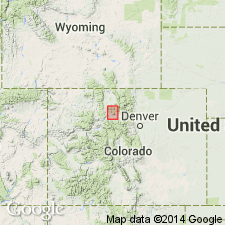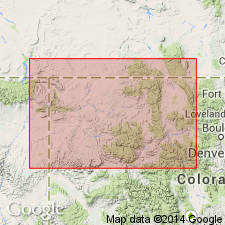
- Usage in publication:
-
- Grouse Mountain Basalt*
- Modifications:
-
- Original reference
- Dominant lithology:
-
- Basalt
- AAPG geologic province:
-
- North Park basin
Summary:
Grouse Mountain Basalt. Mostly a succession of dark-brownish-gray to black, massive to blocky lava flows that show scoriaceous tops and bottoms. Locally, thin layers of tuffaceous sedimentary rocks intercalated between the lavas. About 250 feet thick at Grouse Mountain, but elsewhere as much as 500 feet thick. At Grouse Mountain unconformably overlies Rabbit Ears Volcanics (new) or Middle Park Formation. Locally in Middle Park area overlies Troublesome Formation (Miocene). Youngest extrusive rock in area and caps many upland surfaces north of Colorado River. Age is considered Pliocene(?); no older than Miocene.
Type locality: at Grouse Mountain, in NE/4 sec. 18, T. 2 N., R. 78 W., Hot Sulphur Springs quadrangle, Grand Co., northwestern CO. Named from Grouse Mountain.
Source: Publication; US geologic names lexicon (USGS Bull. 1350, p. 309).

- Usage in publication:
-
- Grouse Mountain Basalt*
- Modifications:
-
- Age modified
- AAPG geologic province:
-
- North Park basin
Summary:
Age changed in from Pliocene? to Miocene on basis of a K-Ar age of 20.1 +/-m.y. Known only in Grand Co., CO in North Park basin.
Source: GNU records (USGS DDS-6; Denver GNULEX).
For more information, please contact Nancy Stamm, Geologic Names Committee Secretary.
Asterisk (*) indicates published by U.S. Geological Survey authors.
"No current usage" (†) implies that a name has been abandoned or has fallen into disuse. Former usage and, if known, replacement name given in parentheses ( ).
Slash (/) indicates name conflicts with nomenclatural guidelines (CSN, 1933; ACSN, 1961, 1970; NACSN, 1983, 2005, 2021). May be explained within brackets ([ ]).

